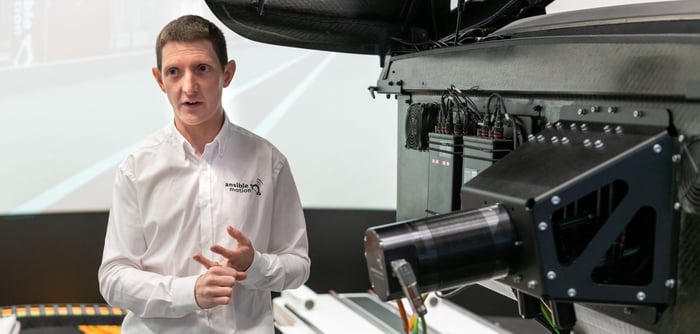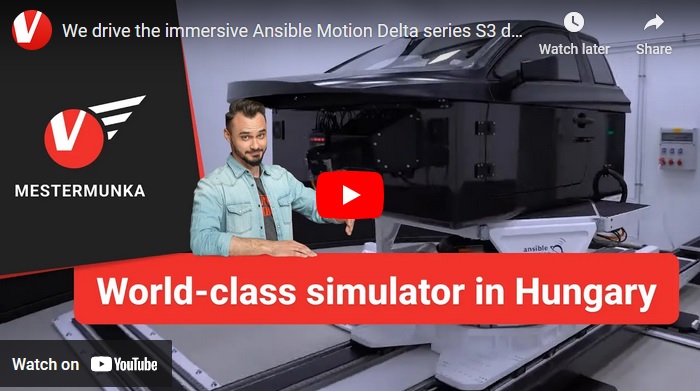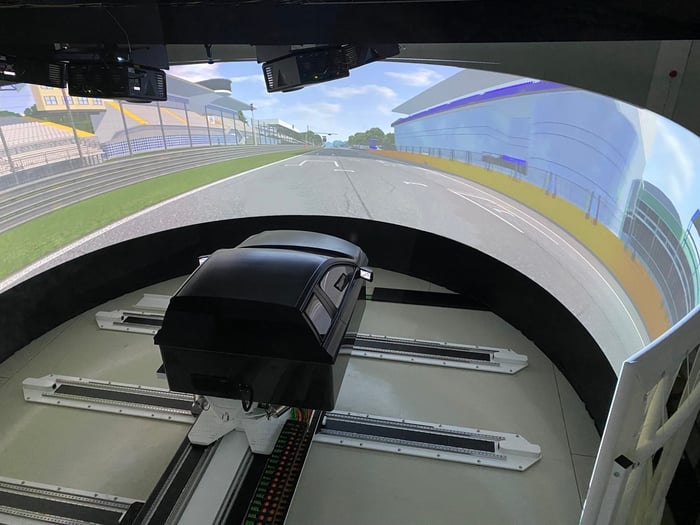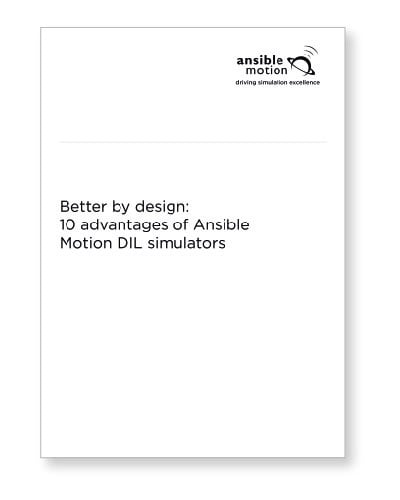 Ian Haigh, team lead at Ansible Motion, discusses how open access to Driver-in-the-Loop (DIL) simulation could help more of the automotive industry confront its biggest challenges.
Ian Haigh, team lead at Ansible Motion, discusses how open access to Driver-in-the-Loop (DIL) simulation could help more of the automotive industry confront its biggest challenges.
The launch of the open-access driving simulator at Hungary’s Bay Zoltán Research Centre earlier this year marked more than just the arrival of another test facility. Located close to the Austrian, Slovenian and Croatian borders, it’s in a prime position to serve the European automotive industry, including Hungary’s own rapidly developing R&D sector. But what’s special about the new ZalaZONE facility is that it grants organizations right across the automotive spectrum access to a crucial development technology that once only existed behind closed doors.

Over the last couple of decades, driver-in-the-loop (DIL) simulation has expanded from a curiosity embraced by a handful of major OEMs and big-budget race teams into an everyday tool for the mainstream automotive industry. Globally, the value of the driving simulator market is predicted to grow to US$2.1bn by 2025.
These days, the applications of DIL simulators range from ride and handling assessments through to HMI and UI development, NVH evaluations and even work on the user experience for autonomous vehicles.

Electrification is but one example that is posing new and sometimes difficult questions. Perhaps most obviously, it brings a whole new character to the powertrain. Driveability and performance feel can be very different when the power, torque and weight characteristics of the vehicles have shifted so dramatically from their combustion-engined predecessors.
Should a high-performance EV, for instance, unleash its full torque capability as soon as there’s enough traction to support that or should it be calibrated to mimic the more progressive delivery of an IC engine? Should EVs be silent, or should they offer some sort of soundtrack? Could the use of torque vectoring or rear-wheel steering mask the extra weight of a BEV powertrain?

The thing that unites all these questions is that they relate to the subjective experience of driving the vehicle. That’s not generally something that can be captured with numerical data from an offline simulation.
Access to facilities such as the Bay Zoltán Research Centre will allow technology developers to harness the power of DIL simulation. It provides a platform to explore new possibilities earlier in the program and at lower cost than physical testing. And, most importantly, it delivers insights that you can only get with a human being sitting at the controls.
Read the full article on the Automotive Testing Technology website.



